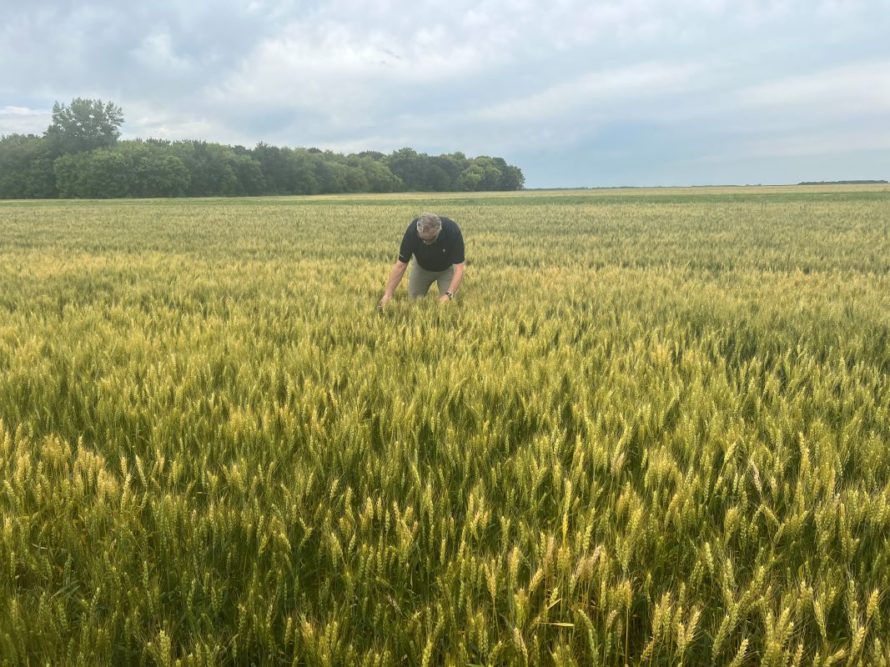FARGO, ND — Three days of spring wheat and durum scouting in the Northern Plains suggested an average crop with good quality will be harvested in August and September, especially if fields toward the western edge of the region receive some timely rains in the coming weeks.
About 55 scouts from across the wheat value chain, academia, government and the media concluded the 2023 tour July 27 at the Northern Crops Institute at North Dakota State University after spending the previous 72 hours stopping at wheat fields across North Dakota and the western edge of Minnesota. Scouts examined wheat to determine development stages and check for the presence of viral and fungal diseases and pressure from pests and weeds. While in the fields, tour attendees jotted down on their Wheat Quality Council yardsticks measurements such as row spacing width, plant height, wheat heads per yard, spikelets per head and kernels per spikelet. Some of those measurements were combined in a formula to estimate the yield potential of a particular field. Each of 14 cars of four scouts apiece averaged all the day’s field stop averages and submitted that data to Rita Ott of General Mills, who calculated daily tour yield estimates that were then averaged each evening across all the cars. A cumulative average was kept, ultimately arriving at a full tour average yield estimate at the conclusion of the third day of scouting.
On the third day of the tour, scouts visited 50 spring wheat fields and generated an average yield estimate of 50.6 bus per acre (bpa), one durum field estimated at 45.3 bpa, and one hard red winter wheat field estimated at 38.9 bpa.
After visiting 318 fields July 25-27, the tour estimated the average hard red spring wheat yield at 47.4 bus per acre (bpa). That compared with 49.1 bpa for the 2022 tour, during which 267 spring wheat fields were examined, and well above the 2021 tour estimate of 29.1 bpa.
“We came within one point of the USDA-NASS number of 47.0 bus,” said Brian Walker, formerly with Miller Milling and the emcee for the tour’s nightly meetings. “This group is pretty good. I don’t know that we’ve ever done that before.”
As for durum wheat estimates, 21 fields were measured, generating an estimated yield of 43.9 bpa. That compared with 39 bpa as the 2022 tour average for durum wheat based on 35 field stops.
The 2023 tour also visited four hard red winter wheat fields for an average yield estimate of 39.6 bpa, compared with 27.5 bpa in 2022.
The time until harvest ranged widely from one to six weeks, with later-planted fields in generally better condition having avoided some of the above-normal temperatures at a critical early growth phase recorded in the region in June.
Tour organizers were pleased with the 2023 tour.
“The tour provides interaction between all sectors of the industry,” said tour organizer Dave Green, executive vice president of the Wheat Quality Council. “We’ve got representatives from all sectors here. We also set out to describe the crop and calculate and estimate its potential and we did a nice job with it. Our third goal was to educate scouts, many new to the industry, on Upper Midwest and Northern Plains crops. Most scouts got to tour a flour mill earlier today and most got to see canola, flax, barley and other crops, so it’s educational for those who attend.”
The tour terminus at the Northern Crops Institute’s longtime home was the last for the Wheat Quality Council’s tour as a new home for the institute was to be constructed elsewhere on the NDSU campus before the 2024 tour.




